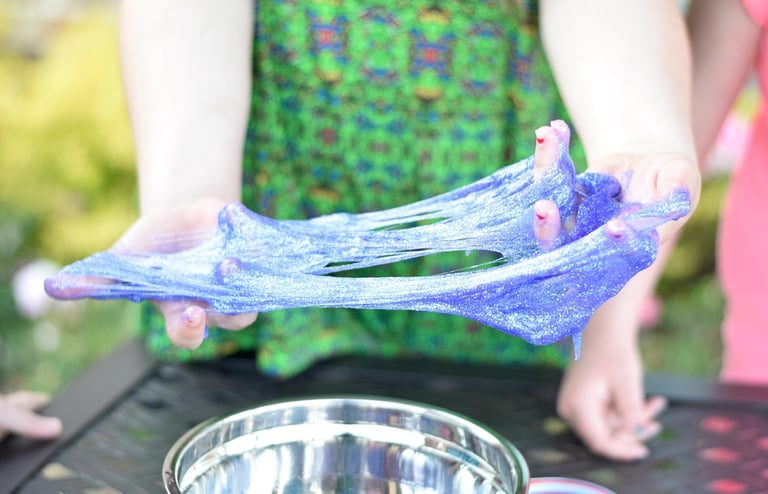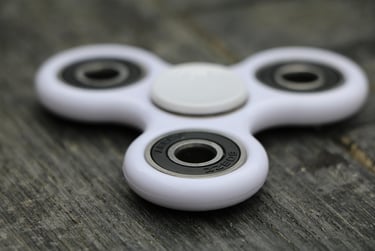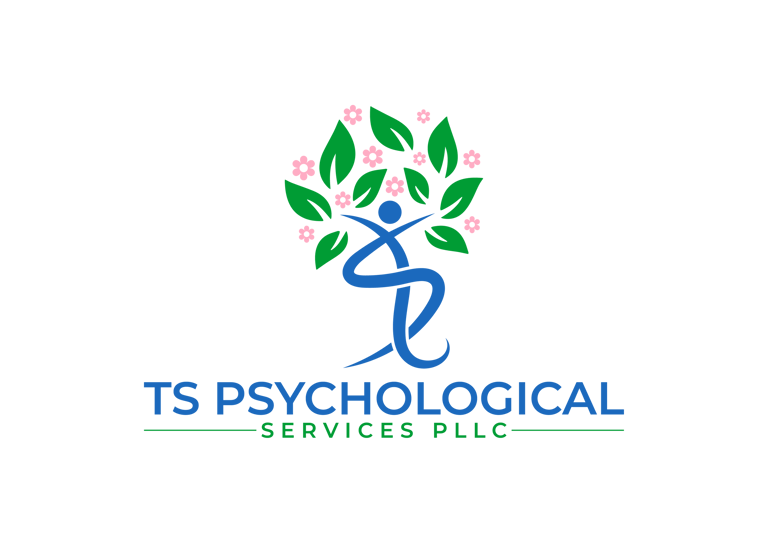Coping with Stress… by Getting Your Hands Dirty
Some of the best tools out there to practice mindfulness, engage your senses, have fun, and cope with stress.
Tatyana Shchupak, Ph.D.
4/22/20254 min read


Let’s talk about some of the best ways to cope with stress — by engaging your senses and yes, sometimes getting a little messy.
When I’m working with children, adolescents, and adults, I often bring these tools into the therapy space — and into people’s everyday lives.
If you’re a parent, I apologize in advance — some of these can get a bit chaotic — but I hope you’ll forgive that! To help you prepare, I’ve included a Mess Score (0–10) with each activity:
0 = Lowest Mess – Low risk. If you drop it, no big deal.
10 = Highest Mess – You’ll likely need a vacuum. Hands will need washing, and you'll want a tray or plastic covering. Outdoors might be your best bet!
Fidgets (Spinners, Cubes, etc.)
This is probably the most popular sensory tool out there. You can find practically any kind of fidget online — spinners, cubes, puzzles, bendy rings, you name it. Try using one while listening to a lecture, during a meeting, in therapy, or when feeling overwhelmed. Fidgets are small, but mighty.
Mess Score: 0–2 for one-piece fidgets like Rubik’s Cubes or twisty puzzles
Mess Score: 8 for slime-filled stress balls — they’re awesome until they pop (and none have survived yet!)
Slime, Putty, Clay, and Play-Doh
The first time I made slime was actually as a therapist. And the best teachers in the therapy room? The kids.
Here’s a quick story: When I was an intern, I was given a completely bare office. I found some amazing toys at a local vintage store — including a giant toy castle that took up half the floor space. It took me forever to put together, and I couldn’t figure out where a couple of pieces went. Another intern tried — still no luck. Days went by. Then a 10-year-old walked in and figured it out in 5 seconds.
That’s exactly how my slime journey started — I watched the tutorials, I had the materials, but I couldn’t get the consistency right. Fast-forward a few years and I’ve got slime-making down to a science (which, by the way, it is). If you enjoy science, baking, mixing, and textures, this one's for you.
There are a million variations to try: paint, food coloring, mica powder, shaving cream, hair conditioner — or buy it pre-made for less mess.
Just a heads-up: if you have young kids, the mess is REAL.
Mess Score: 6–10
Model Magic and Play-Doh: lower mess (they don’t stick as much)
DIY slime: closer to a 10 unless you’re incredibly careful
Pro tip: use a tray and wash hands right after!
Kinetic Sand
It’s not new, but it is SOOO satisfying. Think sand, but softer, moldable, and less messy — unless you spill it. If you’re on the fence about slime, this is a great alternative.
Mess Score: 6
Keep it in a container = low mess
Spill it = hello, vacuum
Glitter varieties = glitter everywhere (and glitter never leaves)
Orbeez / Water Beads
These are a blast. Just a few beads in water and they grow from tiny hard pellets to squishy, jelly-like marbles. Watching the transformation is half the fun, and squishing them is surprisingly satisfying.
Bonus: You can put them in DIY stress balls too!
Mess Score: 5
If spilled, they can go everywhere — but they do dry up and are vacuum-friendly
Low-Mess Tools for All the Senses
Sometimes you want sensory input without a full clean-up afterward. Here are low-mess options by sense:
Touch
Stuffed animals
Weighted blankets
Textured strips and rings
Mats (for floor or wall)
Sight
Colored lights or light projectors
Lava lamps
Calming imagery or nature scenes
Hearing
Sound machines (white noise, rain, waves)
Music
Simple instruments like rain sticks or chimes
Taste
Chewing gum or mints
Sipping a flavored drink (e.g., herbal tea, fruit water)
Sucking on hard candy or lozenges
Crunchy or textured snacks (pretzels, apples, granola)
Smell
Scented lotions or essential oils
Diffusers
Natural scents from fruits, herbs, or spices
Why Sensory Tools Help
Sensory tools help you focus, regulate emotions, and feel grounded. They pull your attention into the present. You can’t ruminate on the past or worry about the future when you’re elbows-deep in slime or completely focused on finding just the right texture.
We experience the world through our senses.
Sometimes we are overstimulated. Sensory tools can help decrease stimulation — while other times, they can provide the input we need to feel calm, connected, and regulated.
When you're feeling anxious, your ability to think clearly can vanish. That’s because your prefrontal cortex — the rational part of your brain — gets overwhelmed by your amygdala, your emotion center. It happens to everyone.
Trying to solve a problem while anxious is like being in a room, staring at a closed door, completely unaware that a window is open behind you — and your emotions won’t let you turn around. Sensory tools help calm your nervous system so you can turn around, see clearly, and think logically again.
Why This Works in Therapy
Ever try having a hard conversation while staring someone in the eyes? Tough, right?
Now imagine that same conversation while walking, drawing, or kneading some Play-Doh. It’s easier. That’s because movement and sensory engagement help regulate the nervous system — they lower the threat response and open the door to connection.
In therapy, sensory tools help kids (and adults) feel safer, calmer, and more able to express themselves — especially when emotions run high.
Final Thoughts
Stress is a normal part of life — but it can easily take over. The good news is there are strategies that can help you feel more in control.
Mindfulness and sensory engagement bring you into the present, out of rumination, and into a space where happiness and peace live. Find what works for you, and don’t be afraid to get your hands a little dirty along the way.
What are your favorite sensory tools for stress relief?
I’d love to hear from you — and if you try any of the messy ones, definitely send me your personal Mess Score!
Let me know if you'd like this in a downloadable format or want help turning this into a graphic or social post!


Disclaimer: This blog is for informational purposes only and is not a substitute for professional care. If you or your child needs support, please consult a licensed mental health professional. You’re welcome to share or reproduce this content with credit to Dr. Tatyana Shchupak and a link to tspsychological.com.
TS PSYCHOLOGICAL SERVICES, PLLC
Contact Us:
347-316-8056
© 2025. All rights reserved.
26 Court Street, Brooklyn, NY 11242
2565 E 17th St, Brooklyn, NY 11235
75-58 113 St, Forest Hills , NY 11375
Locations:
